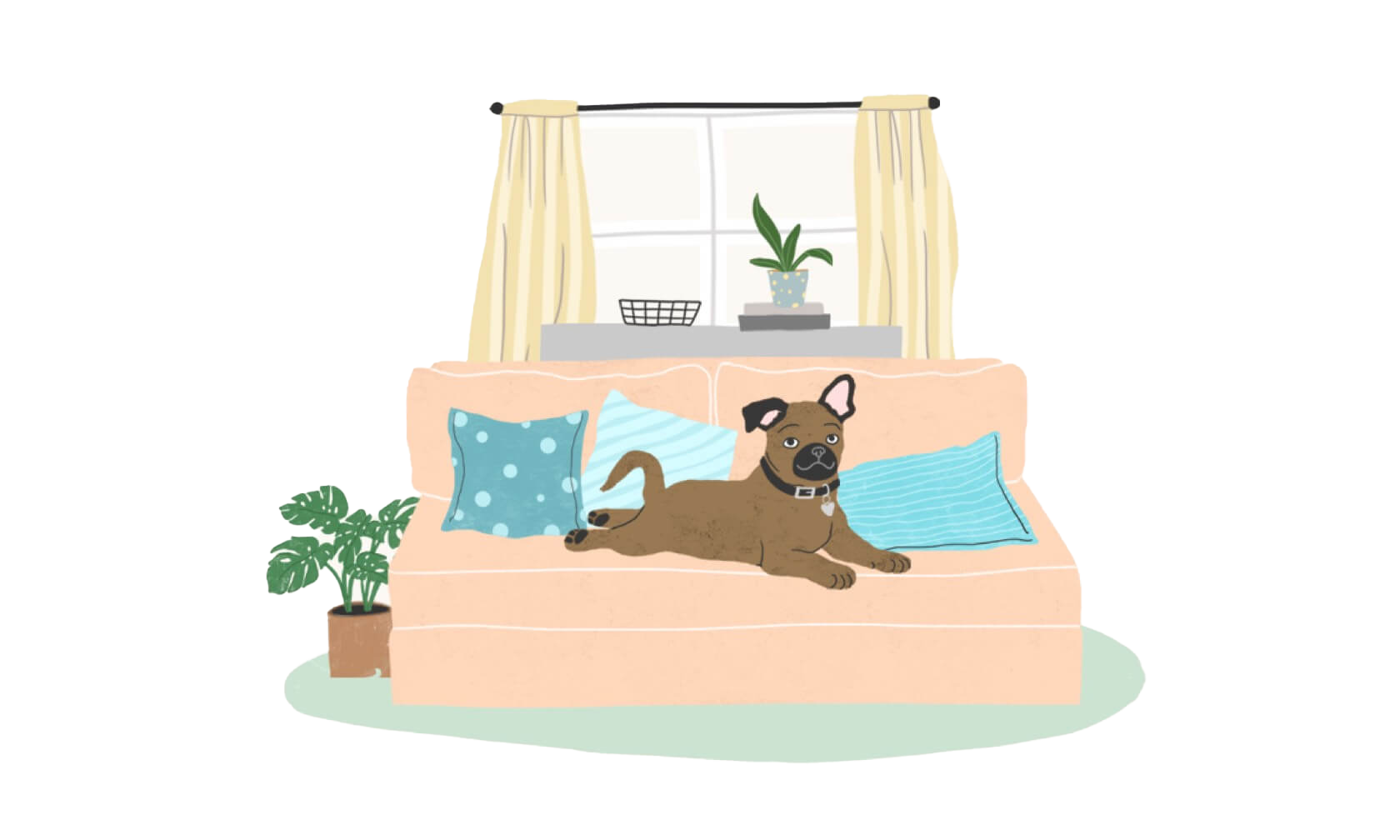Whether you're heading out on a road trip or just running errands, having your dog along for the ride makes every journey better. But just like we buckle up for safety, our four-legged friends need protection too. Keeping your dog secure in the car isn’t just about safety — it also helps prevent distractions and ensures a smoother ride for everyone.
What’s the Safest Place for Dogs in Cars?
Keeping dogs in the back of the car is the safest place for them. In the front seat, they’re at risk of injury if the airbag were to deploy. Airbags are designed for human safety, and the force and angle at which they deploy can severely injure a dog. In the back seat, there is less risk of airbag-related injuries.
Holding a dog on your lap while driving seat can interfere with safe driving by blocking the steering wheel or falling onto the floor around the pedals. Holding onto a dog in the front or back seat, rather than using some type of safety restraint, also puts them at risk.
Safety Restraints for Dogs
A survey shows that as few as 16% of drivers use pet restraints, even though as many as 80% realize it’s dangerous not to.1
There are several different restraint options available, so you can find something that’s right for your dog.
Crash-Tested Crate
A crash-tested crate is the gold standard for traveling with a dog in the car. Secure these crates to your car with safety straps so they don’t slide around. Unlike a wire crate, these crates are tested to withstand the force of a car crash. If there is a sudden stop or collision, a crash-tested crate can prevent your dog from being thrown around or ejected from the vehicle. After a crash, these crates are less likely to pop open, which can result in a dog running away from the scene.
Seatbelt and Harness System
Not all cars are big enough to fit a crate, and some dogs suffer from confinement anxiety in crates. If a crate in the car is not an option for you, you’ll want to investigate a seatbelt and harness system for your dog instead.
There are various seatbelts and harnesses available for restraining your dog in the car. Some attach to your car’s existing seatbelt system, and others use a specialized tether system that you can install. You’ll want to ensure that the crash-tested seatbelt and harness are sized appropriately for your dog and regularly inspect the equipment. Talk to your veterinarian about the fit and safety of the system you select as one that does not fit or is not tested could cause problems in an accident.
Dog Car Seat
Dog car seats can be a good option for small breeds or senior dogs who may have trouble settling for long car rides. Car seats can provide a secure and elevated space for your dog, allowing them to see out the window, which can also help dogs who struggle with car sickness.
As with crates, dog seatbelts, and travel harnesses, you want to make sure that a car seat is crash-tested and properly secured in your vehicle to ensure safety in case of an accident or hard stop.
Don’t Allow a Dog Out the Window
Allowing your dog to put their head out the window puts them at risk of debris flying into their eyes or face, causing injury or irritation.
There’s also the potential danger of them jumping out the window, which is extremely risky if they are not restrained with a seatbelt. This is especially true if they’re in a harness, collar, or leash where they can be hung if they jump out the window.
If you do choose to let your dog enjoy the fresh air with a wide-open window, make sure they are wearing dog goggles to protect their eyes.
You also have the option to leave the window partially down, allowing their nose out, but not much else.
Can You Leave a Dog in a Car?
Leaving a dog unattended in the car, especially during warm or hot weather, can be life-threatening. Even with the windows cracked, temperatures inside the car rise rapidly, leading to heatstroke or death. This can happen quickly, especially for brachycephalic (flat-faced) dogs who already struggle to breathe, older dogs, or those who are overweight. However, all dogs are more susceptible to heat stress than people because they cannot regulate their body temperature as efficiently since they don’t sweat the way we do.
Newer electric cars often come equipped with a “pet mode” feature, which can help mitigate some of the risks associated with leaving your dog in the car for a short time. Pet mode allows you to keep the car running and maintain a comfortable temperature for your dog while you step away, using the vehicle’s climate control system to cool or heat the cabin. This mode also typically connects to a smartphone app so you can monitor your dog and be alerted if the temperature rises or falls outside of the preset levels. However, pet mode is not a substitute for careful supervision and can fail. Leaving your dog in the car should still be avoided whenever possible.
If you are traveling long distances with your dog, there will be times you need to leave your dog in the car. Here are some tips on how to ensure their safety:
- Park in shaded areas and use sunshades or shade cloth to minimize direct sunlight.
- Install window screens so you can leave your car windows fully open for air circulation while keeping your dog secure in the car.
- Make sure your dog has access to fresh water with a spill-proof water bowl.
- Keep your stops as short as possible and use a drive-thru for meals as much as possible so you don’t even need to leave the car.
- Check on your dog frequently. Fortunately, car safety for dogs is straightforward and accessible for every pet owner. Whether traveling near or far with your dog in the car, prioritizing your dog’s wellbeing is the easiest way to keep them safe.
ZPC-04413
- Data, Safety Regulations Lacking When it Comes to Pets and Vehicles. American Veterinary Medical Association. https://www.avma.org/news/data-safety-regulations-lacking-when-it-comes-pets-and-vehicles. Accessed March 14, 2024.



